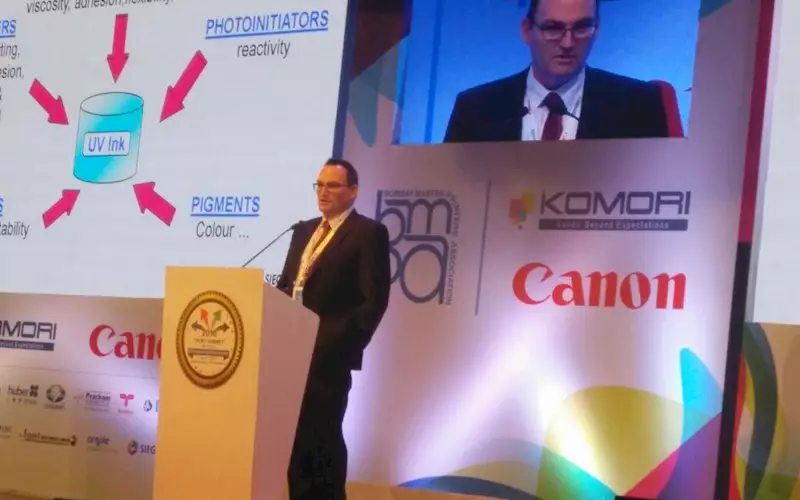BMPA's PS 18: The importance of migration in food packaging
It was a pivotal moment at the conference in Nehru Centre, when Siegwerk's Thomas Glaser spoke about regulatory compliance. He focussed on Regulation (EC) - N° 1935/2004; Nestlé New Standard August 2016; Swiss Ordinance 817.023.21; French Law 2012-1442 of 24 December 2012; EuPIA* Guidelines Regulation (EC) N° 2023/2006; Plastics Regulation (EU) N° 10/2011. To most of the members of the audience this sounded like gobbledegook but a few wise persons realised that with a vigilant FSSAI on Indian so
17 Jan 2018 | By Priya Raju
In a short presentation, Glaser evaluated different food packaging applications with regards to the potential migration risk of the packaging structure, and guides on the selection of ink for the application and packaging material combination.
Glaser spoke about the science and functionality of migration. In case of packaging with an identified migration risk, only inks and varnishes explicitly intended for food packaging should be used.
Knowledge transfer and collaboration among all the stakeholders in the packaging supply chain is vital. Glaser shared the key parameters associated with application of ink and verification of packaging compliance.
Ink manufacturers can certify the suitability of an ink series for food packaging applications, but they cannot warrant the legal compliance of the final printed packaging. Many other parameters have an influence on compliance, such as for example the substrate used, the printing and converting process, the type of food packed and the storage conditions at all stages. In order to avoid problems arising from an improper use of ink, it is very important that all parties involved in the printing and packaging process collaborate which includes end-user, converter/printer, and ink manufacturer.
Special attention must be paid to applications subject to high temperature exposure, such as pasteurisation, sterilisation (dry or in an autoclave), microwave or baking oven. To prevent migration of cleavage products from certain yellow, orange or red pigments, selection of special ink shades, based on appropriate high-performance pigments, may be required. This applies especially if the packed food will be subject to more than 200 °C in a microwave or baking oven; equally a particular choice of alternatives is necessary if food is to be boiled, pasteurised, sterilised, or cooked in a microwave or baking oven, and is packed in structures which do not provide a functional barrier to migration.
A printer should additionally use the checklist: “Processes and Parameters which potentially trigger non-compliance [sic] (migration, organoleptic effect)” for verifications. Packaging intended for particularly sensitive consumer groups (such as infants and small children) requires formal qualification in any case.
There is an increasing interest in PVC-, BPA- and toluene-free inks and this will also shape the future development in ink technology. Besides, full PU (polyurethane)-based ink systems for gravure printing can be expected to address the interest of printers.
Print shop activities
Print shop activities: Activities that may increase the risk of migration or lead to non-evaluated substances in the print:
• Adding printing additives to ink which are not recommended by ink manufacturer and not validated as fit for the purpose by the printer or not observing the maximum amount specified
• Inappropriate printing machine cleaning agents – substances may carry over to and contaminate the non-printed ink and thus the print
• Inappropriate cleaning of equipment in contact with inks, such as rollers and rubber blankets for offset – risk of carry-over if the printer also uses the same equipment for inks that are not intended for food packaging
• Inappropriate use of fountain solutions – risk of carry-over if offset printer also uses them on the same machine for inks that are not intended for primary food packaging
• Using the wrong dosage of hardener which therefore is out of the recommended range (in the case of two-component systems)











 See All
See All